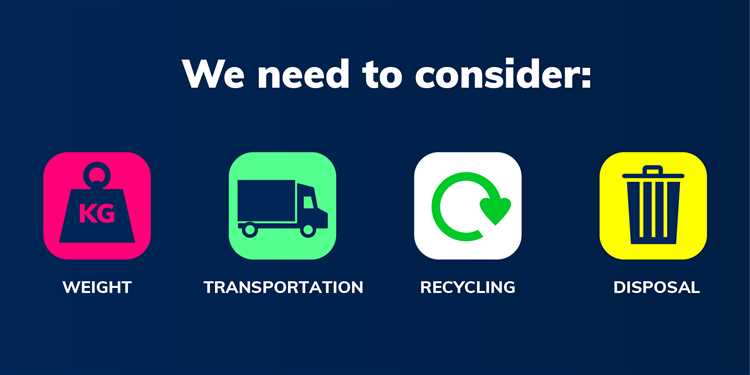
Plastic: it’s everywhere. From the packaging of our food and drinks to the products we use daily, plastic has become an integral part of our lives. However, its impact on the environment has reached alarming levels. The pollution caused by plastic waste is a growing global concern, prompting scientists, researchers, and innovators to seek alternatives.
But is it really possible to replace plastic? While the task may seem daunting, there are promising developments in the field of sustainable materials that offer hope. Researchers are exploring innovative solutions that could potentially replace plastic and reduce the harmful effects on the planet.
One approach is the use of biodegradable materials that can naturally decompose without leaving plastic residues behind. These materials, often made from plant-based sources such as cornstarch or vegetable oil, offer a less harmful alternative to traditional plastics.
Another avenue being explored is the development of compostable materials that can break down in specific environments, such as industrial composting facilities. These materials offer a more sustainable option for single-use items like packaging and utensils, reducing the need for traditional plastics that end up in landfills or the ocean.
- The impact of plastic on the environment
- 1. Pollution
- 2. Non-renewable resource consumption
- Alternatives to plastic: Is it feasible?
- The challenges
- Promising alternatives
- Bio-based materials: A sustainable solution?
- What are bio-based materials?
- Advantages of bio-based materials
- The rise of biodegradable plastics
- The benefits of biodegradable plastics
- The challenges ahead
- Exploring the potential of recycled plastics
- Advantages of recycled plastics
- Challenges and limitations
- The future of recycled plastics
- Collaborative efforts for a plastic-free future
- The Plastic Pollution Coalition
- The Ellen MacArthur Foundation
- Q&A:
- Can we completely replace plastic?
- What are some alternatives to plastic?
- Will replacing plastic be costly?
- What are the environmental impacts of plastic?
- How can individuals help in reducing plastic usage?
The impact of plastic on the environment
Plastic is a versatile and widely used material that has revolutionized many industries. However, its widespread use has also led to significant environmental issues. The impact of plastic on the environment is a growing concern due to its long-lasting nature and inability to biodegrade.
1. Pollution
Plastic pollution is a major environmental problem that affects land, water, and air. Plastic waste often ends up in oceans and waterways, posing a threat to marine life. Plastics break down into microplastics, which can be ingested by marine animals, causing harm to their health and disrupting the ecosystem.
Plastic pollution on land also poses a threat to wildlife. Animals can become entangled in plastic debris, leading to injury or death. Additionally, plastic waste in landfills releases harmful chemicals into the soil, affecting plant growth and contaminating groundwater.
2. Non-renewable resource consumption
The production of plastic requires the extraction and processing of non-renewable resources, such as crude oil and natural gas. This contributes to the depletion of these resources and increases carbon emissions, exacerbating climate change. The energy-intensive manufacturing process further adds to its environmental impact.
Moreover, the disposal of plastic waste requires additional resources, including energy and landfill space. The accumulation of plastic waste in landfills leads to the release of greenhouse gases, further contributing to climate change.
In conclusion, the impact of plastic on the environment is multifaceted and far-reaching. It is essential to find sustainable alternatives and reduce our reliance on plastic to mitigate its harmful effects on our planet.
Alternatives to plastic: Is it feasible?
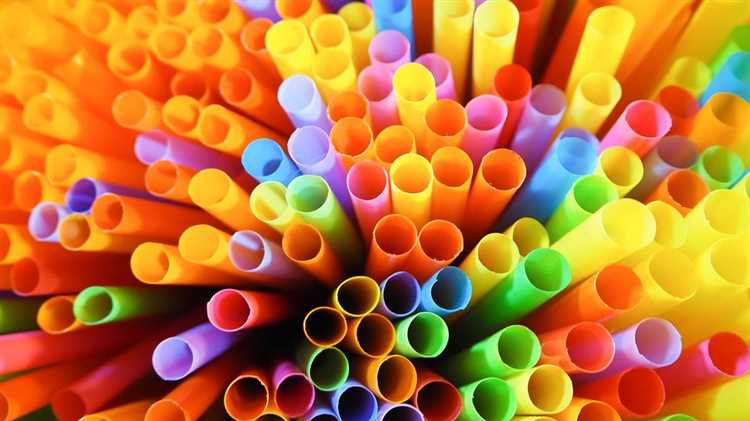
Plastic pollution has emerged as a global crisis, with devastating impacts on our environment and human health. In recent years, there has been growing awareness about the need to find alternatives to plastic, but the question remains: is it feasible?
The challenges
Replacing plastic entirely is undoubtedly a complex challenge. Plastic is incredibly versatile and used in countless everyday products, making it difficult to find suitable alternatives for all applications. Additionally, there are economic considerations, as plastic is often a cheaper option compared to alternatives.
However, given the urgency of the plastic pollution crisis, various alternatives have emerged and gained traction.
Promising alternatives
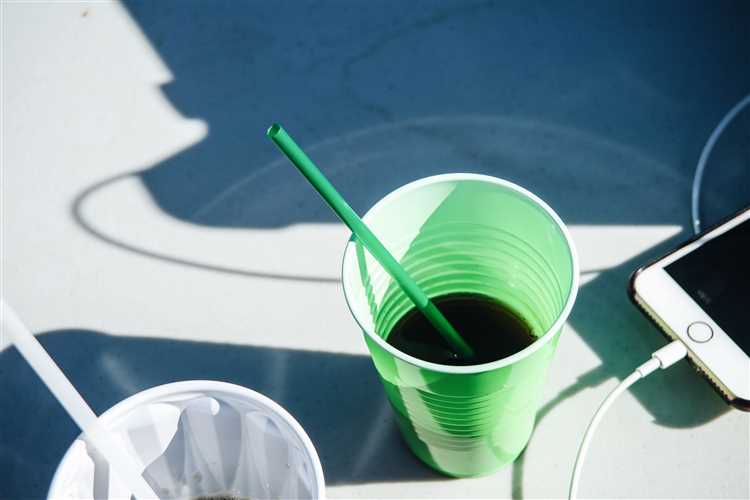
1. Bioplastics: Bioplastics are derived from renewable sources such as plant-based materials, making them more environmentally friendly than traditional plastics. They can be compostable or biodegradable, reducing plastic waste. However, challenges still exist regarding scalability, cost-effectiveness, and end-of-life options.
2. Paper and cardboard: Paper and cardboard have long been used as packaging materials and offer a renewable and biodegradable alternative to plastic. However, their limitations include durability, water resistance, and increased carbon footprint associated with production and transportation.
3. Glass: Glass is a highly recyclable material that can be a substitute for single-use plastic containers. It is inert and does not leach harmful chemicals into products. However, glass can be fragile and heavier, leading to increased transportation emissions.
4. Metal: Metals such as aluminum and stainless steel can be used as alternatives to plastic in various applications, including packaging and utensils. They are durable, recyclable, and have a lower environmental impact. However, their production involves energy-intensive processes.
While these alternatives show promise, it is important to consider their overall impact and feasibility on a large scale. Collaboration between governments, industries, and consumers is crucial in supporting the transition away from plastic and towards a more sustainable future.
In conclusion, while replacing plastic entirely presents challenges, viable alternatives do exist. With continued research, innovation, and collective action, it is indeed feasible to reduce our dependence on plastic and mitigate the harmful effects of plastic pollution.
Bio-based materials: A sustainable solution?
With the growing concern over the environmental impact of plastic, there is an increasing demand for sustainable alternatives. Bio-based materials have emerged as a promising solution in this quest for eco-friendly alternatives.
What are bio-based materials?
Bio-based materials are derived from renewable sources such as plants, agricultural waste, or algae. They are designed to have similar properties and functionalities as traditional materials like plastic, while being biodegradable or compostable.
These materials can be used in a wide range of applications, including packaging, textiles, construction, and automotive industries. They offer a sustainable alternative to conventional materials that are heavily dependent on fossil fuels.
Advantages of bio-based materials
1. Reduced environmental impact: Bio-based materials have a lower carbon footprint compared to traditional materials. They require less energy and resources during production and decompose more quickly after disposal.
2. Renewable and abundant: The raw materials used to produce bio-based materials can be regrown or replenished, making them a sustainable choice. This reduces dependence on fossil fuels and promotes a circular economy.
3. Versatility: Bio-based materials can be engineered to have a wide range of properties, from rigid and durable to flexible and biodegradable. This allows for customization based on specific application requirements.
4. Improved waste management: With the ability to biodegrade or compost, bio-based materials can help reduce the amount of waste going to landfills. They also have the potential to be recycled, further minimizing their environmental impact.
| Advantages | Disadvantages |
|---|---|
| Reduced environmental impact | Higher production costs |
| Renewable and abundant | Limited material availability |
| Versatility | Technical challenges in processing |
| Improved waste management | Shorter shelf life |
While bio-based materials offer numerous advantages, they are not without their limitations. Higher production costs, limited material availability, technical processing challenges, and shorter shelf life are some of the drawbacks that need to be addressed.
Nevertheless, with ongoing research and advancements in technology, bio-based materials hold great potential in replacing plastic and other non-sustainable materials. They offer a more sustainable and environmentally friendly alternative for a wide range of applications, contributing to a greener and more sustainable future.
The rise of biodegradable plastics
Plastic waste continues to be a major environmental concern, with millions of tons ending up in landfills and oceans every year. However, there is hope on the horizon in the form of biodegradable plastics. These innovative materials are designed to break down over time, reducing their impact on the environment.
One of the major advantages of biodegradable plastics is their ability to decompose naturally. Traditional plastics can take hundreds of years to break down, but biodegradable plastics can degrade in a matter of months or years, depending on the specific material and conditions. This makes them a much more sustainable alternative to traditional plastics.
There are several types of biodegradable plastics currently in development and use. One common type is made from plant-based materials such as cornstarch or cellulose. These plastics are often used for packaging and disposable items like cutlery and bottles. Another type is made from biodegradable polymers, which are synthetic materials that can be broken down by microorganisms. These plastics are often used in applications like medical devices and automotive parts.
The benefits of biodegradable plastics
Biodegradable plastics offer several key benefits over traditional plastics. Firstly, they reduce the amount of plastic waste that ends up in landfills and oceans. This helps protect wildlife and ecosystems from the harmful effects of plastic pollution. Additionally, biodegradable plastics help to conserve fossil fuels, as they are often made from renewable plant-based materials instead of oil or gas.
Furthermore, biodegradable plastics can play a role in reducing greenhouse gas emissions. Traditional plastics are made from fossil fuels and their production contributes to the release of carbon dioxide and other greenhouse gases. By using biodegradable plastics instead, we can reduce our reliance on fossil fuels and help mitigate climate change.
The challenges ahead
While biodegradable plastics show promise, challenges still remain in their widespread adoption. One challenge is the cost of production. Biodegradable plastics can be more expensive to produce than traditional plastics, making them less economically viable for some industries. However, as technology advances and production scales up, the cost of biodegradable plastics is expected to decrease.
Another challenge is ensuring proper disposal and recycling of biodegradable plastics. While these materials are designed to break down naturally, they still need the right conditions to do so. If biodegradable plastics are not properly disposed of, they may still end up in landfills or oceans, where they may take longer to degrade or cause other environmental issues.
In conclusion, the rise of biodegradable plastics offers hope for a more sustainable future. These innovative materials have the potential to reduce plastic waste, conserve resources, and mitigate climate change. However, further research and development are needed to overcome the challenges and ensure the widespread adoption of biodegradable plastics.
Exploring the potential of recycled plastics
The growing concern over the environmental impact of plastic waste has led to increased interest in finding more sustainable alternatives. One promising solution is the use of recycled plastics, which offers the potential to reduce our reliance on new plastic production while also diverting waste from landfills.
Advantages of recycled plastics
1. Environmental benefits: Recycling plastics helps to conserve natural resources by reducing the need for new plastic production. It also reduces the amount of plastic waste that ends up in landfills, where it can take centuries to decompose.
2. Energy savings: Producing plastic from recycled materials requires less energy compared to producing plastic from virgin materials. This translates to reduced greenhouse gas emissions and a smaller carbon footprint.
3. Versatility: Recycled plastics can be used in a variety of applications, ranging from packaging materials to construction products. They can often be used as a direct replacement for virgin plastic, offering the same performance and functionality.
Challenges and limitations
1. Contamination: One of the main challenges of using recycled plastics is the potential for contamination. It is crucial to ensure that the recycled plastic is free from impurities and other types of plastic, as this may affect its quality and performance.
2. Limited supply: While the demand for recycled plastics is increasing, the supply is currently limited. This is partly due to the lack of infrastructure and resources for collecting, sorting, and processing plastic waste. It is essential to invest in improving recycling capabilities to meet the growing demand.
3. Downcycling: In some cases, the quality of recycled plastic may be degraded during the recycling process, resulting in a lower-value product. This is known as downcycling, and it can limit the potential applications of recycled plastics.
The future of recycled plastics
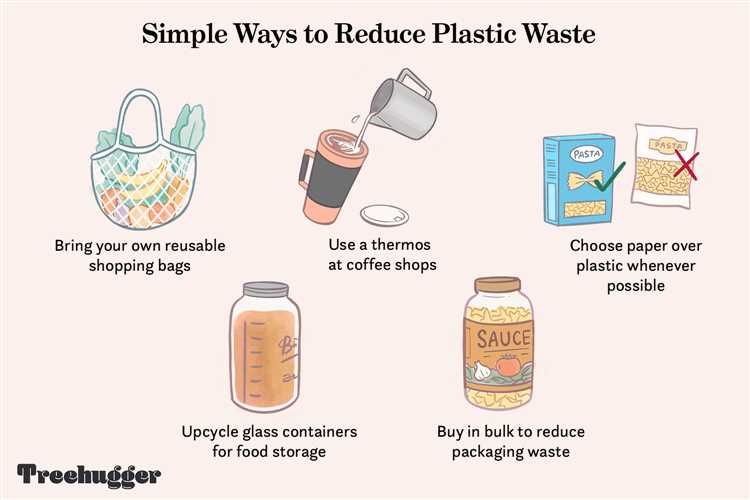
Despite the challenges, the potential of recycled plastics is vast. Innovations in recycling technologies and processes continue to improve the quality and versatility of recycled plastics, making them an increasingly viable alternative to virgin plastics.
To fully tap into the potential of recycled plastics, it is crucial to work towards establishing a circular economy, where plastics are continuously recycled and reused. This requires collaboration between governments, industries, and consumers to promote sustainable practices and create a market for recycled products.
By exploring the potential of recycled plastics and investing in sustainable solutions, we can move closer to a future where plastic waste is minimized, and the environment is protected.
Collaborative efforts for a plastic-free future
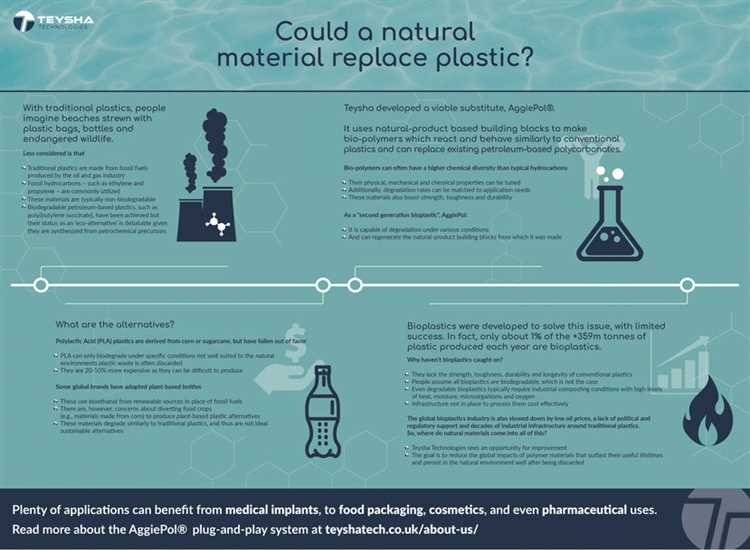
As the world grapples with the environmental impact of plastic pollution, a number of organizations and initiatives have emerged to collectively work towards a plastic-free future. These collaborative efforts bring together diverse stakeholders from various sectors to develop innovative solutions and drive meaningful change. Through their combined efforts, they aim to reduce the reliance on plastic and promote more sustainable alternatives.
The Plastic Pollution Coalition
The Plastic Pollution Coalition is a global alliance of organizations, businesses, and individuals working together to reduce plastic pollution and its harmful effects on the environment and human health. By fostering collaboration and sharing best practices, the coalition promotes a shared vision of a world free from plastic pollution. Their initiatives include advocacy, education, and the development of innovative solutions that help communities and businesses transition away from single-use plastics.
The Ellen MacArthur Foundation
The Ellen MacArthur Foundation is spearheading the transition to a circular economy, where resources are kept in use for as long as possible, and waste is minimized. Their New Plastics Economy initiative brings together businesses, policymakers, and other stakeholders to redesign the global plastics system. Through collaborative innovation and research, they aim to eliminate plastic waste and create a more sustainable plastic economy that is based on circularity and reuse.
| Initiative | Description |
|---|---|
| The Plastic Bank | The Plastic Bank is a social enterprise that aims to alleviate poverty and plastic pollution by creating a global network of recycling centers. They incentivize individuals living in impoverished areas to collect and exchange plastic waste for goods and services. This helps keep plastic out of the environment and provides a source of income for those in need. |
| The Break Free From Plastic Movement | The Break Free From Plastic Movement is a global movement consisting of over 1,800 organizations working towards eliminating plastic pollution. They engage in advocacy, awareness-raising campaigns, and community organizing to drive change on a local and global scale. By pressuring governments and corporations to take responsibility for their plastic footprint, they aim to create a future free from plastic pollution. |
| The Plastics Pact | The Plastics Pact is a collaborative network of organizations, governments, and businesses working towards a circular economy for plastics. The pact brings together stakeholders from across the plastics value chain to set common goals and develop innovative solutions. By working together, they aim to eliminate unnecessary and problematic plastic packaging, increase recycling rates, and promote the use of recycled plastics. |
These collaborative efforts are just a few examples of the many initiatives that are working towards a plastic-free future. By joining forces and pooling resources, these organizations are making significant progress in reducing plastic pollution and promoting sustainable alternatives. Through continued collaboration, innovation, and advocacy, we can pave the way to a cleaner and greener future.
Q&A:
Can we completely replace plastic?
While it may be challenging to completely replace plastic in all areas of our lives, there are certainly efforts being made to find alternatives and reduce plastic usage. Many companies and individuals are making changes such as using biodegradable or compostable materials, promoting recycling, and advocating for more sustainable practices.
What are some alternatives to plastic?
There are several alternatives to plastic that are being explored and utilized. Some examples include biodegradable materials such as paper, cornstarch, and bamboo. Additionally, there are efforts to create more sustainable packaging options using materials like glass and metal. However, it is important to note that not all alternatives are perfect and have their own limitations.
Will replacing plastic be costly?
The cost of replacing plastic with sustainable alternatives can vary. While some alternatives may be more expensive initially, the long-term benefits and potential cost savings from reducing plastic waste and its environmental impact can outweigh the initial investment. With advancements in technology and increased demand for eco-friendly products, the prices of alternative materials are also expected to decrease over time.
What are the environmental impacts of plastic?
Plastic has significant environmental impacts. It is non-biodegradable and can persist in the environment for hundreds of years, leading to pollution of land, waterways, and oceans. Plastic waste also harms wildlife, with many animals mistaking it for food or becoming entangled in it. Additionally, the production of plastic contributes to greenhouse gas emissions and the depletion of fossil fuels.
How can individuals help in reducing plastic usage?
Individuals can play a significant role in reducing plastic usage. Some steps they can take include using reusable bags and water bottles, avoiding single-use plastic products, recycling properly, and supporting businesses and organizations that promote sustainability. By making conscious choices and spreading awareness, individuals can contribute to the overall reduction of plastic waste and help push for change.